A personal note from Ales!
This newsletter will be slightly longer than usual. I’d like to share an itinerary to the amazing countries of India and Nepal which will allow you to walk in the footsteps of Buddha, but before I do so, here are some highlights of this awe-inspiring journey as well as some background information on Buddha’s life, which I hope you’ll enjoy and might get you even more excited to go on this amazing trip.
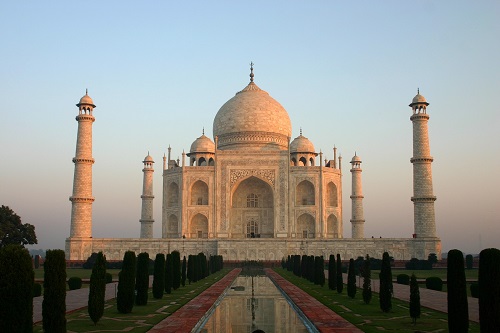
Buddha was also called the Tathagata, which means “the one who has come thus,” and Shakyamuni, which means “the sage of the Shakya tribe.” Siddhartha was born in the town of Kapilavastu (located in today’s Nepal).
His parents were King Shuddhodana and Queen Maya, who ruled the Sakyas. One night, Queen Maya dreamed that an elephant with six tusks, carrying a lotus flower in its trunk, touched her right side. At that moment her son was conceived. Brahmins came and interpreted the dream:
The child would be either the greatest king in the world or the greatest ascetic and was named Siddhartha, which means “he whose aim is accomplished.” Siddhartha was about 20, when he married Yasodhara, daughter of one of the King’s ministers, and one year later they had a child named Rahul.
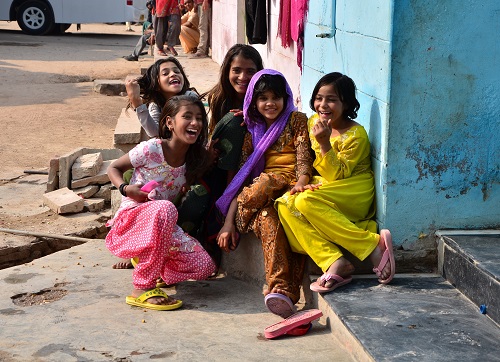
At the age of 29, Siddhartha asked his charioteer, Channa, to take him out of the city as he was not allowed to go out of the palace because the King was afraid the Prince would become an ascetic, as predicted by the astrologer.
During two trips, Siddhartha saw the “Four Sights” that changed his life. On the first trip, he saw old age, sickness, and death. During his second trip, he saw a wandering holy man, an ascetic, with no possessions.
That night, Siddhartha silently kissed his sleeping wife and son, and ordered Channa to drive him out to the forest where he took off his sword, cut off his hair and beard. He then took off all his princely garments and put on a yellow robe of a holy man. He then ordered Chianna to take his possessions back to the King.
Wandering through Northeastern India, Siddhartha sought out holy men, and learned about Samsiara (reincarnation), Karma, and Moksha.
One day, Siddhartha realised that his years of penance only weakened his body, and that he could not continue to meditate properly. When he stepped into the river to bathe, he was too weak to get out, and it is believed that the trees lowered their branches to help him. At that instant, a milk-maid named Nandabala came and offered a bowl of milk and rice, which Siddhartha accepted.
Refreshed by the meal, Siddhartha sat down under a fig tree (often referred to as the Bo tree, or Tree of Enlightenment) and resolved to find out the answers to life and suffering.
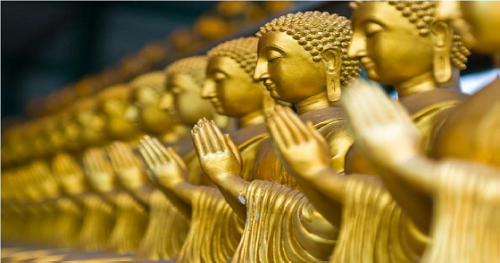
While meditating, Mara (an evil god) sent his three sons and daughters to tempt Siddhartha with thirst, lust, and distractions of pleasure but Siddhartha stayed unswayed in deep meditation, and recalled all his previous rebirths, gained knowledge of the cycle of births and deaths, and with certainty, cast off the ignorance and passion of his ego which bound him to the world.
Thereby, Siddhartha had attained enlightenment and became the Buddha (enlightened one). Buddha went to the city of Sarnath. There he began teaching holy men what he had learned. This preaching was called his Deer Park Sermon, or “Setting in Motion the Wheel of Doctrine.”
Siddhartha revealed that he had become the Buddha, and described the pleasure that he had first known as a prince, and the life of severe asceticism that he had practiced. Neither of these was the true path to Nirvana.
The true path was the Middle Way, which keeps aloof from both extremes. At an age of about eighty, a blacksmith named Cuanda fed buddha with a meal that caused him to become ill. Buddha even then forced himself to travel to Kushinagara, and laid down on his right side to rest in a grove of shala trees.
It is said that as a crowd of followers gathered, the trees sprouted blossoms and showered them on Buddha. Buddha told Ananda, “I am old and my journey is near its end. My body is like a worn-out cart held together only by the help of leather straps.” Three times, Buddha asked the people if they had any questions, but they all remained silent.
Finally Buddha said, “Everything that has been created is subject to decay and death. Everything is transitory. Work out your own salvation with diligence.” After passing through several states of meditation, the Buddha died, reaching Parinirvana (the cessation of perception and sensation).
Featured Itinerary
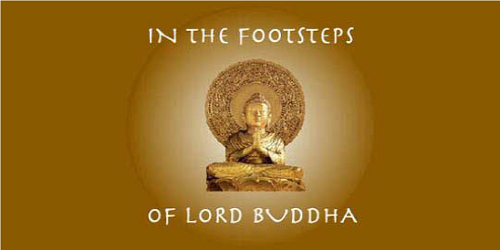
Day 01 Arrive Delhi
Upon arrival, meet and assist and then transfer to your hotel. Enjoy the rest of the day free at leisure.
Day 02 Explore old and New Delhi
After breakfast, proceed for a full day sightseeing tour. Visit Jama Masjid (India’s largest mosque) with a rickshaw ride through the busy Chadni Chowk Bazaar. In the afternoon, we visit the Humayaun’s Tomb, India Gate, Presidential Palace and end our trip in Sikh Temple.
Old Delhi – The 350 years old walled city was built by Emperor Shah Jehan in 1648 as his capital. Opposite the fort are the black and white onion dome and minarets of the Jama Masjid, the most elegant mosque in India.
New Delhi – The new capital designed by Sir Edward Lutyens. An interesting drive, passing through the impressive Rajpath from the World War I memorial arch, the India Gate towards the Presidential Palace. Visit Humayun’s Tomb built in 1565 AD.
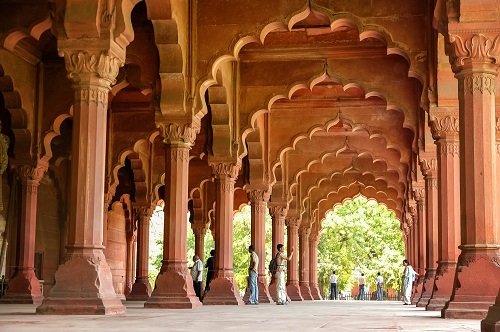
Day 03 Delhi – Agra (210 kms/05 hrs) – Train to Varanasi
After breakfast, drive to Agra. Agra is famous as being home to one of the Seven Wonders of the World, the “TAJ MAHAL”. The architectural splendor of the mausoleums, the fort and the palaces are vivid reminders of the opulence of the legendary Mughal Empire, of which Agra was the capital in the 16th and early 17th centuries.
While its significance as a political center ended with the transfer of the capital to Delhi in 1634 by Shah Jahan, its architectural wealth has secured its place on the international map. Agra is known for its superb inlay work on the marble and soapstone by craftsmen who are descendants of those who worked under the Mughals
The city is also famous for its carpets, gold thread embroidery and leather shoes. Upon arrival, check in at your hotel. After some time to relax, visit Agra Fort and the Taj Mahal. In the evening you will be taken to station to board your overnight train to Varanasi.
Day 04 Arrive Varanasi
Upon arrival, in Varanasi station, meet and assist and then transfer to your hotel. The rest of the day is free at leisure. In the evening proceed to witness the Arati ceremony at the bank of Ganges.
Day 05 Varanasi
Early morning proceed for a boat ride on the Ganges. In the afternoon visit Sarnath. After attaining enlightenment, Buddha came to Sarnath, where he preached his first sermon. In the sylvan surroundings of a deer park, he initiated his first five disciples into the Buddhist monkhood. Here began one of the greatest religions of the world. Emperor Ashoka erected a magnificent stupa here. Forgotten for centuries, Sarnath was excavated by British archaeologists in 1836.
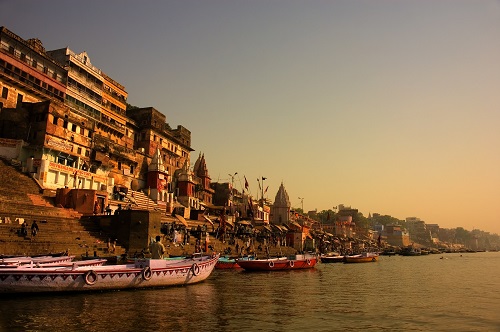
Day 06 Varanasi – Bodhgaya (265 kms/08 hrs)
After breakfast, drive to Bodhgaya which is the most important Buddhist pilgrimage site in the world. Apart from being a significant archaeological site, it is also a vital Buddhist centre.
Devout Buddhists and tourists from all over the world visit Bodhgaya, to study Buddhism and the art of meditation, or to simply absorb the aura of solemn grandeur that surrounds the place.
Bodhgaya is a quiet and peaceful place. You could visit Bodhgaya in a day, or even plan a long study leave, depending on your inclination. Under the giant Bodhi tree, the Buddha gained enlightenment.
After spending seven weeks pondering over his awakening, he stepped out to spread his message to the world. The Niranjana river where he bathed after enlightenment still flows close by. Bodhgaya has a magnificent complex of monasteries in various Buddhist architectural styles.
Day 07 Bodhgaya/Rajgir/Nalanda/Patna
After breakfast, enjoy a half-day sightseeing tour of Bodhgaya. Afterwards, drive to Patna en route visiting Rajgir & Nalanda. Reach Patna and transfer to your hotel.
Rajgir is the ancient capital of Magadha kings. The Buddha often visited Rajagriha to retreat at the Jivkamaravana monastery, preaching and meditating on the Gridhakuta Hill. The disciples of the Buddha built many structures here. Rajgir is also sacred to Jains as Lord Mahavira studied and meditated here. The first Buddhist Council was held here after the Buddha’s nirvana.
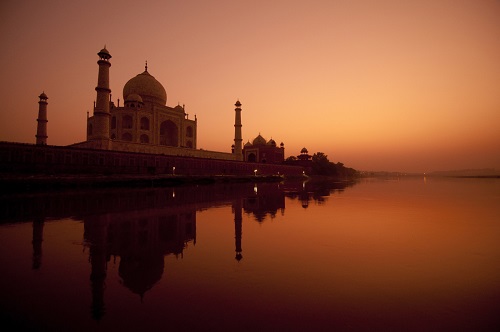
Nalanda is believed to be the oldest university in the world. Founded in the 5th century BC, it became a renowned centre of Buddhist and Jain learning. Hieun Tsang, the Chinese traveller, spent several years here in the 7th century AD. Nalanda Archaeological Museum has a magnificent collection of Pali and Mauryan statues, bronze and manuscripts.
Nalanda Mahavihara an institute for the study of Pali literature houses rare Buddhist manuscripts. Though Buddha visited Nalanda several times during his lifetime, this famous centre of Buddhist learning shot to fame much later, during 5th – 12th centuries. The Chinese scholar and traveller Hiuen Tsang stayed here in the 7th century, and has left an elaborate description of the excellence, and purity of monastic life practised here. About 2,000 teachers and 10,000 students from all over the Buddhist world, lived and studied in this international university.
Day 08 Patna/Vaishali/Kushinagar
After breakfast, leave for Kushinagar (225 Km/08 Hrs), en route visiting Vaishali (40 Km) by car.
Vaishali: After dwelling at Kapilvastu the Buddha left for Vaisali, an ancient site that has been identified with modern Basarh in Bihar. Vaisali is also known as Vaisala. The blessed one was staying at the Great hall in Mahavana (Large Grove). For Buddhists Vaisali is a sacred place
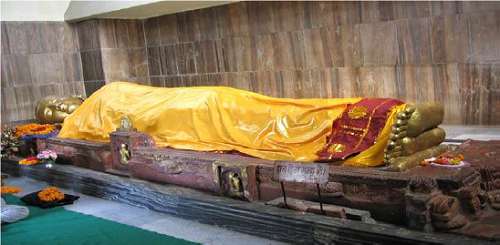
Day 09 Kushinagar/Lumbini (Nepal) – 170 kms/04 hrs
After breakfast, leave for Lumbini, birth place of Lord Buddha. Reach Lumbini and in the afternoon proceed for full day for exploration.
Lumbini: The birth place of Lord Buddha. Lumbini is situated at the foothills of the Himalayas in modern Nepal. The holy site is being developed with international support as the supreme Buddhist pilgrimage and a symbol of world peace. The shrines and monastries that many countries have built or are still building reflect the architectural traditions of those countries, and thus giving Lumbini an international feel with a message of universal love and brotherhood.
Day 10 Lumbini/Balrampur (India) – 160 kms/03 hrs
After breakfast, drive to Balrampur. Upon arrival, check in at your hotel and have the rest of the day at your own leisure.
Day 11 Explore Balrampur
After breakfast you will have the opportunity to meet with the Maharaja of Balrampur (subject to availability) at his palace. After lunch, visit the former hunting lodge of Maharaja of Balrampur and visit of the local village of the tribal people.
Followed by evening tea under the Sandalwood Tree. Evening night drive back to Balrampur through forest to enable viewing of wild life.
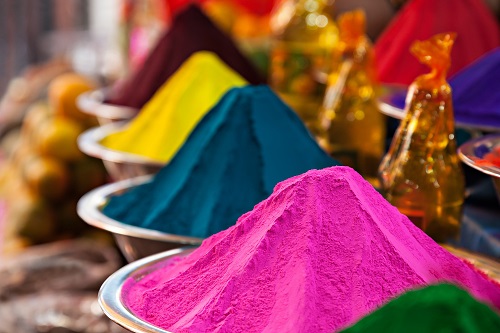
Day 12 Balrampur/Lucknow (160 kms/04 hrs)
After breakfast, drive to Lucknow. Upon arrival, check in at your hotel and have the rest of the day at your own leisure.
Day 13 Fly Lucknow/Delhi
After breakfast, enjoy half day sightseeing of Lucknow. Afterwards, transfer to Railway Station to catch the Shatabdi Express for Delhi at 15.35 Hrs. Reach Delhi at 21.45 Hrs. and transfer to the airport for your homeward bound flight.
As always, the tour can be completely customized to suit your wishes for an unforgettable experience and we can add days if you would like to spend more time at one or the other destination as well as shorten any of them.
About Ales

I’ve been passionate about travel ever since I can remember. Having had the opportunity to travel all around the world for many years it’s my greatest desire to enrich peoples lives in a profound way by creating unforgettable journeys, and give each of my clients the amazing experiences I’ve had throughout my travels.
By allowing me to design your journeys, you can be assured that you will be taken care of from the moment we start planning your vacation until the moment you return. Contact me and let me know where you would like to go or let me help you find the destination that will give you the experience you are looking for.
May all your travels stir your soul and change your life forever – Ales.










